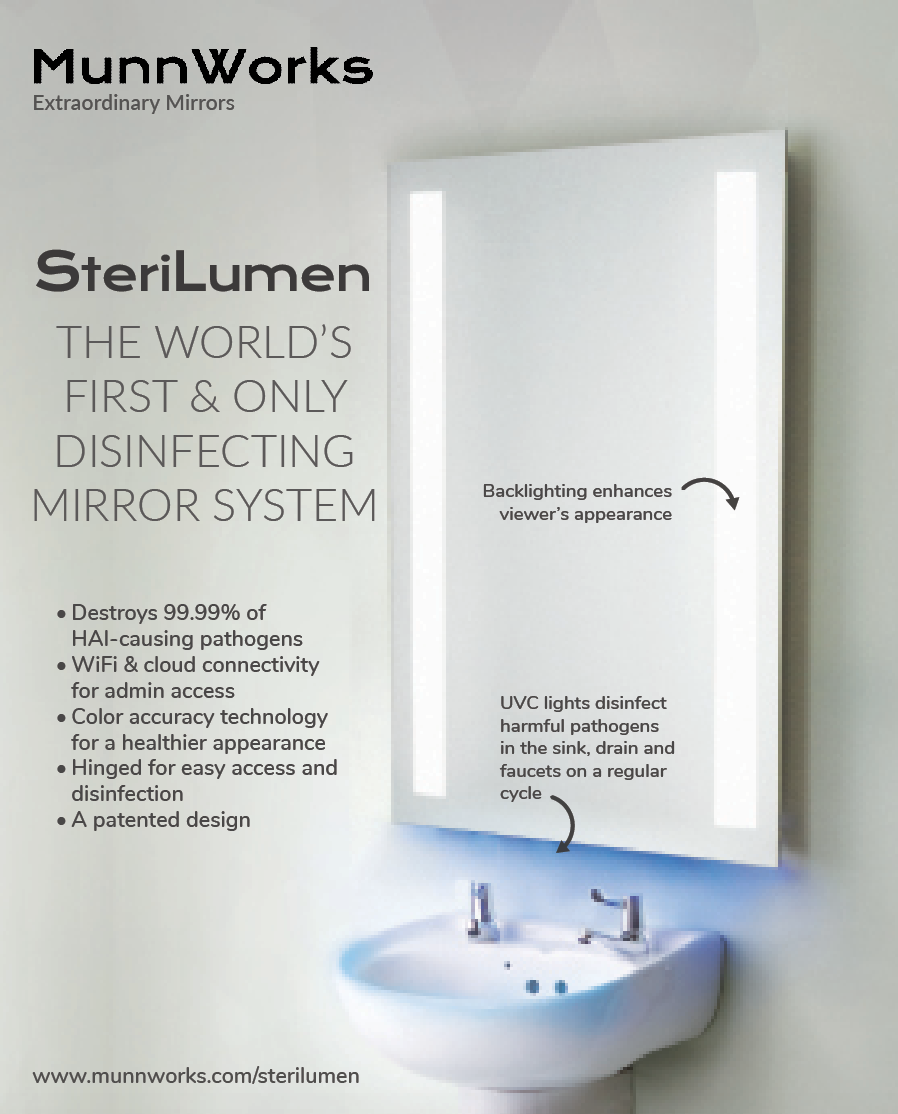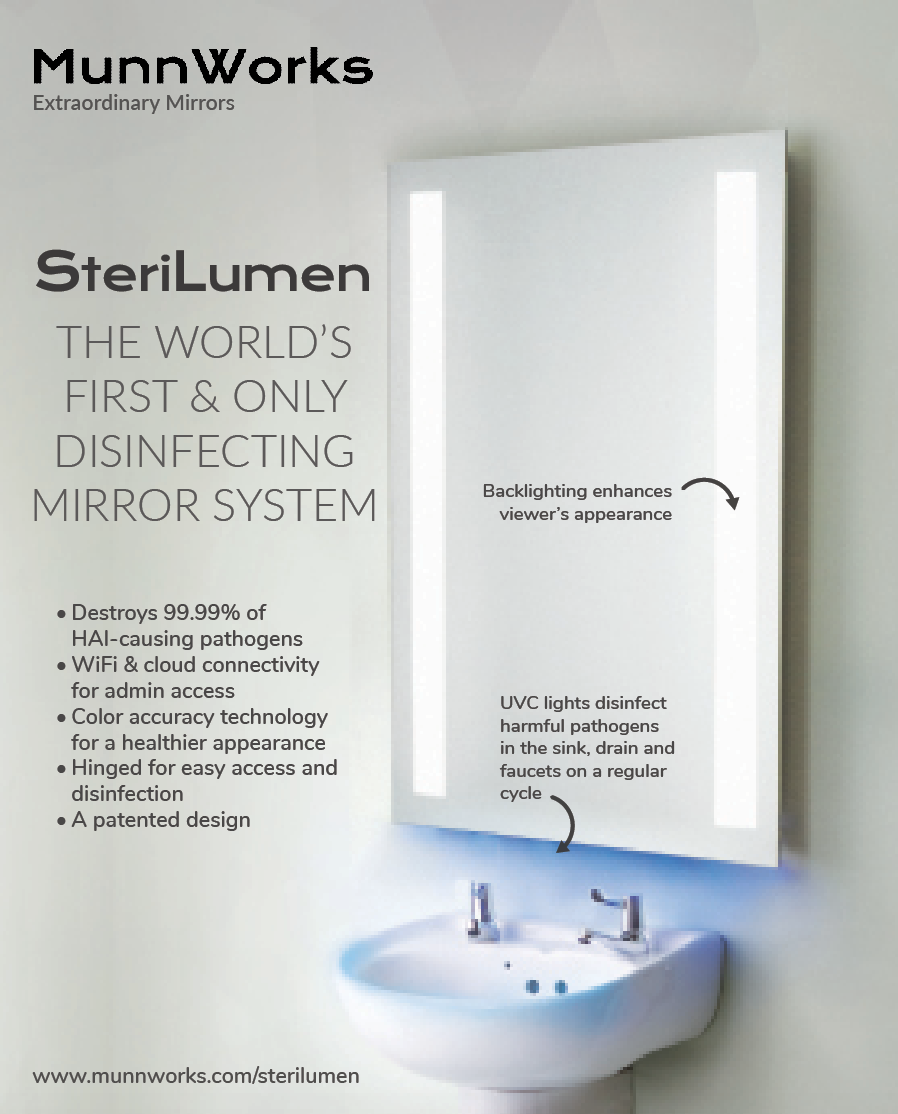sterilumen : the disinfecting, patented device for HAI reduction
by Max Munn
HAI’s are preventable and the federal government (CMS) has stepped in to ensure the issue is being addressed by penalizing healthcare institutions for high infection rates.
Mt Vernon, NY United States Hospital Solutions Medical Device Prevention Equity RaiseAbout our project

The problem we solve: approx. 1.7 million people in the US become infected with a Healthcare-Acquired Infection (HAI) every year. An illness acquired in the hospital while being treated for something else. Of those, an estimated 99,000 people die. The estimated cost to the healthcare system is $45 Billion annually. HAI’s are preventable and the federal government (CMS) has stepped in to ensure the issue is being addressed by penalizing healthcare institutions for high infection rates. For healthcare facilities, a big part of the task is controlling the presence of infectious agents in the patient room. The challenge to destroy the pathogens in a healthcare facility is due in part to the current cleaning protocols which rely heavily on manual cleaning. Environmental Services staff are given minimal time for cleaning/disinfection patient rooms. eg.. 10 minutes per room. Some disinfectants require a 10-minute dwell time after being applied to the surface to be effective. Read more in our business plan

About our solution: Ongoing research continues to show that bathroom sink contamination is a critical problem. There are few options for cleaning and disinfection of sink drains short of removing the sink and scrubbing out the drain with bleach and scrub brushes. To effectively reduce the number of pathogens and potential cross contamination in this area, we have developed the SteriLumen Mirror. This disinfection device uses 275 nm UVC light on high-risk bathroom sink surfaces, thereby effectively reducing the bioburden, including difficult microbes such as C. difficile that can thrive on surfaces for months even after typical cleaning and disinfection.SteriLumen has been designed with guidance from Infection Prevention specialists, Facilities Directors and A&D professionals each of whom have areas of concern that need to be addressed in an area of high contamination. SteriLumen can be used every day even while patients are occupying the room. Our initial focus will be on the hospital patient room

Progress to date:
We have laboratory validation of the results [ destrying 99.99% of the 20 most dangerous pathogens iwith 2 hours of exposure] . Our prototype has been reveiwed at several major hospital design firmsand several hospitals are waiting for the first production units.
Our vision includes the development of a cloud-based software platform that will enable infection control professionals to track the use of the disinfecting device by reporting when it turns on and off as well as the length of time in use and the intervals. The design of the mirror includes an IOT (Internet of Things)-enabled programmable controller that transmits usage and performance data over the internet. We believe this platform has the potential to evolve into a much more powerful and robust tool to help infection prevention professionals, control, track, analyze and plan the use of various solutions they support a sustainable reduction of microbes ultimately reducing the number of HAI’s within a facitlity.
SteriLumen was developed with these objectives:
- It must reduce unacceptably high level of contamination on the sink, drain, faucets and backsplash in the patient bathroom through the use of UVC light.
- It must be automated and not solely dependent on human behavior to be effective. A predetermined program for effective disinfection was determined by testing the time it takes to effectively kill pathogens such as c-difficle spores, MRSA and others.
- It must provide automatic shut off when someone enters the bathroom providing for the safety of anyone who enters the room.
- It must automatically resume the predetermined program for effective disinfection once no motion is detected in the bathroom.
- It must provide mirror illumination that enhances the appearance of the viewer and contributes to healing.
- It must allow for easy cleaning and disinfecting behind the mirror itself.
This disinfecting device meets all design and lighting requirements for healthcare and provides disinfection for the backsplash, sink, drain and surrounding countertops.
About Our Team
Creator: Max Munn
Location: New York
Education: M.I.T.
Bio: Entrepreneur and inventor of a patented disinfecting lit-mirror for hospital HAI control
Hospital Affiliation: N.A.
Title: CEO
Advanced Degree(s): B.Architecture
About Our Company

SteriLumen, Inc.
Location: 150 N. Macquesten Pkwy
-
Mt Vernon, NY 10550
US
Founded: 2017
Twitter: n.a.
Product Stage: In the Market
YTD Sales: Working on it
Employees: 1-2
How We Help Hospitals
A New Automated Solution: SteriLumen Disinfecting Mirror
Effective disinfection in a healthcare facility requires attention to detail. In a hospital bathroom, bacteria thrive in sink drains, splashing out when the faucet is turned on, contaminating the bowl, countertop, faucets and backsplash. In 2011-2012 the Clinical Center of the National Institutes of Health faced an infection outbreak that originated from a sink drain, resulting in the deaths of 11 patients[1].
Ongoing research continues to show that bathroom sink contamination is a critical problem.[2] There are few options for cleaning and disinfection of sink drains short of removing the sink and scrubbing out the drain with bleach and scrub brushes.
To effectively reduce the number of pathogens and potential cross contamination in this area, we have developed the SteriLumen Mirror. This disinfection device uses 275 nm UVC light on high-risk bathroom sink surfaces, thereby effectively reducing the bioburden, including difficult microbes such as C. difficile that can thrive on surfaces for months even after typical cleaning and disinfection. SteriLumen has been designed with guidance from Infection Prevention specialists, Facilities Directors and A&D professionals each of whom have areas of concern that need to be addressed in an area of high contamination. SteriLumen can be used every day even while patients are occupying the room.
Our initial focus will be on the hospital patient room sink, and areas surrounding the sink. This same technology can be applied to other sinks in other locations throughout the hospital or health care facility. Eventually this product will be introduced to other related facilities such as assisted living, nursing homes, physician and dental clinics as well.
Our vision includes the development of a cloud-based software platform that will enable infection control professionals to track the use of the disinfecting device by reporting when it turns on and off as well as the length of time in use and the intervals. The design of the mirror includes an IOT (Internet of Things)-enabled programmable controller that transmits usage and performance data over the internet.
We believe this platform has the potential to evolve into a much more powerful and robust tool to help infection prevention professionals, control, track, analyze and plan the use of various solutions they support a sustainable reduction of microbes ultimately reducing the number of HAI’s within a facitlity.
SteriLumen was developed with these objectives:
- It must reduce unacceptably high level of contamination on the sink, drain, faucets and backsplash in the patient bathroom through the use of UVC light.
- It must be automated and not solely dependent on human behavior to be effective. A predetermined program for effective disinfection was determined by testing the time it takes to effectively kill pathogens such as c-difficle spores, MRSA and others.
- It must provide automatic shut off when someone enters the bathroom providing for the safety of anyone who enters the room.
- It must automatically resume the predetermined program for effective disinfection once no motion is detected in the bathroom.
- It must provide mirror illumination that enhances the appearance of the viewer and contributes to healing.
- It must allow for easy cleaning and disinfecting behind the mirror itself.
The Solution: The MunnWorks Disinfecting Mirror
- The mirror is electrified and backlit, with built-in LED lighting, providing the viewer with an attractive view of themselves. This type of mirror is now common in the hospitality industry – the annual market size is in excess of $80 million.
- It provides 99.99% destruction of the most common and dangerous pathogens when used for approximately 2 hours every 4-6 hours. Additional UV LED lights designed into the back of the mirror will kill any remaining pathogens not reached by cleaning staff.
- The built-in motion detector and sensor will automatically shut the UVC light off when anyone enters the room eliminating any concern over UV safety. Once there is no movement in the room for 10 minutes the UVC light comes back on to restart and continue its cycle.
- A patentable magnetic locked side hinge allows easy access for maintenance and environmental services staff to clean and maintain the mirror without removing it from the wall. Normal mirrors in hospital bathrooms are attached with brackets, making it necessary to take the mirror off the wall to clean and disinfect behind the unit. In reality, this area doesn’t get cleaned on a regular basis, leading to mold and pathogen growth.
- A built-in programmable controller ensures the mirror operates for the full cycle periods required. It’s functionality is expandable and may become a source for recurring income through additional data reporting, leasing and maintenance of add-on elements.
- The UVC LEDs are installed via a removable panel, leading to ease of replacement or upgrade. The UVC LEDs are expected to become more powerful over time and users of SteriLumen will likely want to replace the early generation UVC LEDs with more powerful models as the microbial world continues to change.
- The unit is easy to install and uses standard 110-120V electrical wiring.
- IOT (Internet of Things) connectivity uses WiFi and bluetooth technology that will enable continuous transmission of use and functionality data over the internet for collection and analysis. This could include data on the length of time the UVC light was on as well as the length of time, frequency and interval length concerning the bathroom use.
- A companion software platform enables the administrator to view and analyze the use and functionality data.
Patents
Max Patent number 9,724,442 was issued by the Patent and Trademark Office on August 8, 2017 to Munn. This patent application focuses on a general disinfecting apparatus and not a mirror specifically, opening the way for the patent to cover product extensions besides the Disinfecting Mirror. Patents are also currently pending in China, Taiwan, Japan, South Korea and the EU. Additional patent applications for “related” fixtures have been recently filed. Further patent filing
[1] https://www.nbcnews.com/health/health-news/study-tracks-how-superbugs-splash-out-hospital-sink-drains-n725426
[1] https://aricjournal.biomedcentral.com/articles/10.1186/s13756-017-0182-3
Innovation Details
Intellectual Property Summary
Patent number 9,724,442 was issued by the Patent and Trademark Office on August 8, 2017. This patent application focuses on a general disinfecting apparatus and not a mirror specifically, opening the way for the patent to cover product extensions besides the Disinfecting Mirror. Patents are also currently pending in China, Taiwan, Japan, South Korea and the EU. Additional patent applications for “related” fixtures have been recently filed. Further patent filing are planned.
Patent Link
http://pat2pdf.org use # 9724442
Clinical Information
Independent Laboratory Testing and Product Validation
Matthew Hardwick, CEO of ResInnova Laboratories, is a thought leader in the field of infection prevention in the healthcare environment and is an expert in antimicrobial surface technologies. ResInnova Laboratory, tests products that reduce pathogens on environmental surfaces including solid surfaces, such as doorknobs and tabletops, and porous surfaces, such as textiles. (http://www.resinnovalabs.com )
ResInnova Laboratories was contracted to provide third party independent laboratory validation testing during the design of the mirror. Based on test results the direction of the lights and strength of diodes was determined to ensure effective disinfection of the backsplash, sink and drain. Dr. Hardwick completed his testing and released his report on Sept 9, 2017.
Test Results
“ResInnova tested the bacteria killing ability of two MunnWorks UV-emitting mirror prototypes. The first prototype received demonstrated robust reduction of spore viability on backsplash surfaces. After one hour exposure, reductions approached 3 logs (99.9%) and surpassed 4 logs (99.99%) after 2 hours. This first prototype, however, had several deficiencies as it failed to reduce spore viability on faucet handles and on surfaces greater than 7 inches from the light source. It was decided by Munnworks to create a new prototype based on these results and we discontinued testing on the first prototype.
The second prototype increased the reach of the UV achieving a 2.94 log reduction of C diff. spores on the sink side edges (the rim of the sink approximately 14 inches away from the light source) after 2 hours. The second prototype also improved UV exposure to faucet handles achieving greater than 4 log spore reductions were seen after just 1 hour and 3.5 log reductions were seen at the sink drain after 2 hours of exposure. This prototype also showed a 3.56 log reduction in spores at the sink drain (no reductions were seen in the first prototype). No reductions were seen in the sink at points immediately adjacent to the sink wall proximal to the UV source or on the distal sink edge. This prototype also failed to deliver adequate UV to the backsplash.”
Regulatory Status
FDA approval is not required
How we will use the funds raised
Thank You
I have prepared a 44 page detailed business plan that I will email to anyone having a serious interest in further understanding this opportunity, including proforma 3 year financial projections in addition to the revenue projections shown below.
Investor Info
Market Size
Projected 3 Year Growth
Revenue Model
See financial section of the business plan attached https://www.dropbox.com/s/4nbo1numpjv5akq/SteriLumen%20Business%20Plan%20-%20December%202017.docx?dl=0
Competitors
See competition section of the business plan attached https://www.dropbox.com/s/4nbo1numpjv5akq/SteriLumen%20Business%20Plan%20-%20December%202017.docx?dl=0
Traction
ROI will be negotiated, however dividend paying preferred equity is likely the best method for achieving investors goals.
Due Diligence Docs
Please note that access to the company's confidential materials is limited. Click this button to request access from the Company and its representatives.
Updates
No updates found .
Supporters
There are not supporters yet.
Help us find best new ideas to fund by telling us what you think. Your feedback goes straight to the team behind this project in private, so tell them what you really think.
0
Score
0
Score
0
Likes0
Partners0
Pilots0
Follows-
This campaign has ended but you can still get involved.See options below.
Help us find best new ideas to fund by telling us what you think. Your feedback goes straight to the team behind this project in private, so tell them what you really think.


